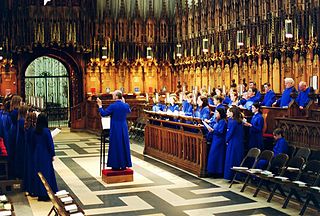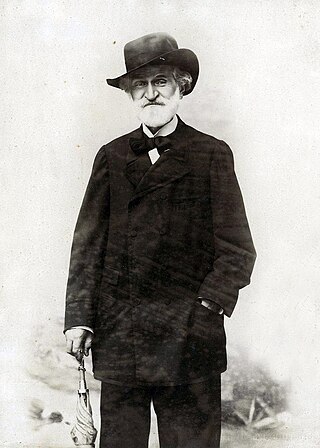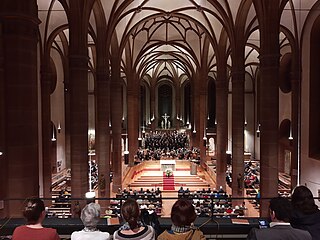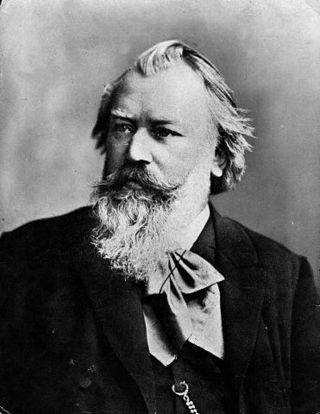
In Western classical music, a motet is mainly a vocal musical composition, of highly diverse form and style, from high medieval music to the present. The motet was one of the pre-eminent polyphonic forms of Renaissance music. According to Margaret Bent, "a piece of music in several parts with words" is as precise a definition of the motet as will serve from the 13th to the late 16th century and beyond. The late 13th-century theorist Johannes de Grocheo believed that the motet was "not to be celebrated in the presence of common people, because they do not notice its subtlety, nor are they delighted in hearing it, but in the presence of the educated and of those who are seeking out subtleties in the arts".

Renaissance music is traditionally understood to cover European music of the 15th and 16th centuries, later than the Renaissance era as it is understood in other disciplines. Rather than starting from the early 14th-century ars nova, the Trecento music was treated by musicology as a coda to Medieval music and the new era dated from the rise of triadic harmony and the spread of the contenance angloise style from Britain to the Burgundian School. A convenient watershed for its end is the adoption of basso continuo at the beginning of the Baroque period.

A choir is a musical ensemble of singers. Choral music, in turn, is the music written specifically for such an ensemble to perform. Choirs may perform music from the classical music repertoire, which spans from the medieval era to the present, or popular music repertoire. Most choirs are led by a conductor, who leads the performances with arm, hand, and facial gestures.

The Mass is a form of sacred musical composition that sets the invariable portions of the Christian Eucharistic liturgy, known as the Mass.

Vespro della Beata Vergine, SV 206, is a musical setting by Claudio Monteverdi of the evening vespers on Marian feasts, scored for soloists, choirs, and orchestra. It is an ambitious work in scope and in its variety of style and scoring, and has a duration of around 90 minutes. Published in Venice as Sanctissimae Virgini Missa senis vocibus ac Vesperae pluribus decantandae, cum nonnullis sacris concentibus, ad Sacella sive Principum Cubicula accommodata, it is sometimes called Monteverdi's Vespers of 1610.

The Stabat Mater is a 13th-century Christian hymn to Mary, which portrays her suffering as Jesus Christ's mother during his crucifixion. Its author may be either the Franciscan friar Jacopone da Todi or Pope Innocent III. The title comes from its first line, "Stabat Mater dolorosa", which means "the sorrowful mother was standing".
The Desert Music is a work of music for voices and orchestra composed by the minimalist composer Steve Reich. It is based on texts by William Carlos Williams and takes its title from the poetry anthology The Desert Music and Other Poems. The composition consists of five movements, with a duration of about 46 minutes. In both its arrangement of thematic material and use of tempi, the piece is in a characteristic arch form (ABCBA). The piece was composed in 1983 and had its world premiere on 17 March 1984 in Cologne, Germany.
Jacobus Vaet was a Flemish composer of the Renaissance. He was a representative of the generation between Josquin and Palestrina, writing smooth polyphony with pervasive imitation, and he was a friend both of Clemens non Papa and Lassus.

Karol Szymanowski's Stała matka bolejąca , Op. 53, was composed in 1925 and 1926. Scored for soprano, alto and baritone soloists, SATB choir and orchestra, it sets Jozef Janowski's Polish translation of the Marian hymn in six movements. His first composition to a liturgical text, it is characteristic of his late period in being partly based on Polish melodies and rhythms; a stay in the Tatras mountains, at Zakopane, in 1922 had led him to describe Polish folk music as "enlivening [in] its proximity to Nature, [in] its force, [in] its directness of feeling, [in] its undisturbed racial purity." Indeed, Szymanowski's use of Polish musical elements together with the Polish translation here is unique.

The Quattro pezzi sacri are choral works by Giuseppe Verdi. Written separately during the last decades of the composer's life and with different origins and purposes, they were nevertheless published together in 1898 by Casa Ricordi. They are often performed as a cycle, not in chronological sequence of their composition, but in the sequence used in the Ricordi publication:

Fürchte dich nicht, BWV 228, is a motet for a funeral by Johann Sebastian Bach, set for double chorus. The work in two movements draws its text from the Book of Isaiah and a hymn by Paul Gerhardt. Scholars disagree about the composition time and place which was traditionally believed to be 1726 in Leipzig, while more recent scholarship suggests for stylistic reasons that it was composed earlier during the years Bach lived in Weimar.

Stabat Mater is a 2008 composition for choir and orchestra by Karl Jenkins, based on the 13th-century prayer Stabat Mater. Like much of Jenkins' earlier work, the work incorporates both traditional Western music with ethnic instruments and vocals, this time focusing on the Middle East. The first recording features the Royal Liverpool Philharmonic Orchestra and Choir, along with two soloists, Lithuanian mezzo-soprano Jurgita Adamonyte, and English musician Belinda Sykes, who both sings and performs on the duduk, an Armenian reed instrument.

Antonín Dvořák's Stabat Mater, Op. 58 (B. 71), is an extended setting for vocal soloists, choir and orchestra of the 20 stanzas of the Stabat Mater sequence. Dvořák sketched the composition in 1876 and completed it in 1877. It has been characterized as a sacred cantata and as an oratorio, and consists of ten movements of which only the first and the last are thematically connected. Its total performance time is around 85 minutes.
Frank Ferko is an American composer.

Stabat Mater is a work by Gioachino Rossini based on the traditional structure of the Stabat Mater sequence for chorus and soloists. It was composed late in his career after retiring from the composition of opera. He began the work in 1831 but did not complete it until 1841.

Stabat Mater (P.77) is a musical setting of the Stabat Mater sequence, composed by Giovanni Battista Pergolesi in 1736. Composed in the final weeks of Pergolesi's life, it is scored for soprano and alto soloists, violin I and II, viola and basso continuo.

Stabat Mater in F minor, D 383, is a musical setting of the Stabat Mater sequence, composed by Franz Schubert in 1816. It is scored for soprano, tenor and bass soloists, SATB choir, 2 flutes, 2 oboes, 2 bassoons, contrabassoon, 2 french horns, 3 trombones, violin I and II, viola, cello and double bass.

Fest- und Gedenksprüche, Op. 109, is a cycle of three motets for mixed double choir by Johannes Brahms. He completed the work, setting biblical verses to music, in 1889 and dedicated it to Carl Petersen. It was published in 1890 by Simrock.














